From Ancient Opar to the Moon: An Interview with Author Christopher Paul Carey
Christopher Paul Carey is a name well known to the readers of Philip José Farmer. In 2012, his collaboration with Farmer, The Song of Kwasin, was published by Subterranean Press in the omnibus Gods of Opar: Tales of Lost Khokarsa. Other installments in the Khokarsa series (also known as the Ancient Opar series) by Carey followed, including Exiles of Kho, Hadon, King of Opar, and Blood of Ancient Opar. As Farmer’s Khokarsa series was inspired by the lost city of Opar from Edgar Rice Burroughs’ Tarzan novels, it is fitting that Christopher Paul Carey now tries his hand at Swords Against the Moon Men, a new novel set in the world of Burroughs’ Moon trilogy (The Moon Maid, The Moon Men, and The Red Hawk). I took some time to ask Chris about Swords Against the Moon Men as well as other aspects of his writing career.
Your latest novel, Swords Against the Moon Men, is the sixth volume in the Wild Adventures of Edgar Rice Burroughs series. Could you tell us a little bit about the series, for the benefit of readers who are unfamiliar with it, and how your novel fits in?
The Wild Adventures of Edgar Rice Burroughs is a new line of books authorized and published by Edgar Rice Burroughs, Inc. The books are all set in Burroughs’ fantastical worlds but written by today’s authors. So far, the series includes four new Tarzan books (Tarzan: Return to Pal-ul-don by Will Murray, Tarzan on the Precipice by Michael A. Sanford, Tarzan Trilogy by Thomas Zachek, and Tarzan: The Greystoke Legacy Under Siege by Ralph N. Laughlin and Ann E. Johnson), a sequel to Burroughs’ Beyond the Farthest Star (A Soldier of Poloda by Lee Strong), and now my novel, Swords Against the Moon Men, which takes place in the world of Burroughs’ lunar trilogy.
[Click the images for bigger versions.]
Swords Against the Moon Men is the story of Julian 7th, in the alternate future of 2076. For a quarter century, Earth has been conquered and humanity enslaved under the Kalkars, cruel and tyrannical invaders from Va-nah, the Moon’s hollow interior. Julian, grandson of the great hero who led the first expedition to Va-nah and once nearly defeated the Kalkars, is but a mere trainer of horses for his ruthless lunar masters when he unexpectedly receives a mysterious transmission from the planet Barsoom. The desperate plea from the Red Planet hurls Julian upon a quest to the heart of Va-nah. There, with the unlikely help of a lunar tyrant’s daughter and a fierce alien quadruped, he must make contact with a lost Barsoomian ambassadorial mission and forge an alliance with the Warlord of Mars himself to stand against the Moon Men, or the inhabitants of both Earth and Barsoom will find themselves forever in the thrall of the Kalkars.
When did the idea for Swords Against the Moon Men first spring up?
The idea came to me on my first reread of The Moon Maid after [President of Edgar Rice Burroughs, Inc.] Jim Sullos and I agreed on the ERB project I would be working on. A particular passage in the opening of the first chapter of The Moon Maid jumped out at me. The protagonist of ERB’s original Moon trilogy is a man known only as Julian, who down through the centuries is successively reincarnated in the body of his grandson. In the passage that caught my eye, Julian 3rd states that he can vividly recall every event of his life that occurred in four particular incarnations — both from his past lives and, strangely, from those of his future. However, there is one intervening incarnation that he cannot recall — the grandson that his reincarnated soul should have inhabited between the incarnations of Julian 5th (the protagonist of main text of The Moon Maid) and Julian 9th (the protagonist of The Moon Men). Julian 3rd states, “Whether I actually skipped three generations that time or through some caprice of Fate I am merely unable to visualize an intervening incarnation, I do not know.” Well, I thought, that is a very curious dangling thread that Burroughs left in the trilogy! And immediately I seized on ERB’s second and more intriguing option — that for some mysterious reason Julian 3rd could not “recall” his future incarnation as Julian 7th — and began to work out an explanation. The story fell into place with an almost uncanny ease after that.
Aside from that, what motivated me to write this particular story is because I loved The Moon Maid so much and it was always slightly disappointing to me that The Moon Men and The Red Hawk, as entertaining as they were, were set on Earth. Ever since I was a kid, I’ve wanted to read more adventures set in strange world of Va-nah. Writing this novel fulfilled that childhood longing.
Does the reader need to have read Burroughs’ original Moon trilogy to understand the setup of Swords Against the Moon Men?
We’ve provided a timeline at the beginning of the novel that will cover all the background of the series needed for new readers to dive right into Swords Against the Moon Men. However, reading the entire original lunar trilogy by Burroughs — The Moon Maid, The Moon Men, and The Red Hawk — is still a good idea for completists. But readers shouldn’t feel put out if they haven’t read the trilogy, or if they’ve only read part of it. Swords Against the Moon Men is actually set between the first and second chapters of The Moon Men, so there’s also the option of reading just The Moon Maid and the first chapter of The Moon Men, and then switching over to reading Swords Against the Moon Men.
As far as which edition of ERB’s Moon trilogy to read, I recommend The Expanded Moon Maid (ERBville Press, 2014), which includes more than 18,000 words that were cut from the original magazine publications of the novels. The standard text of the original trilogy is also available to read for free online at the ERBzine website.
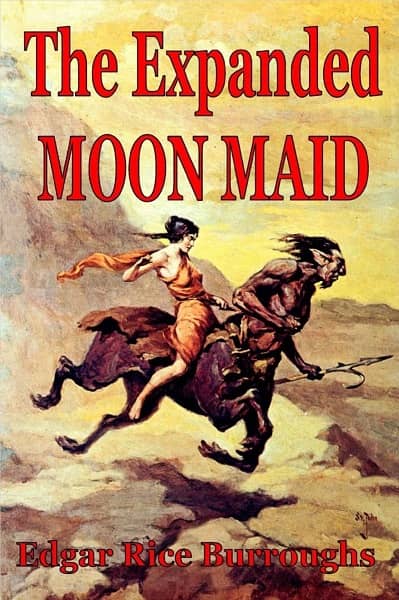 |
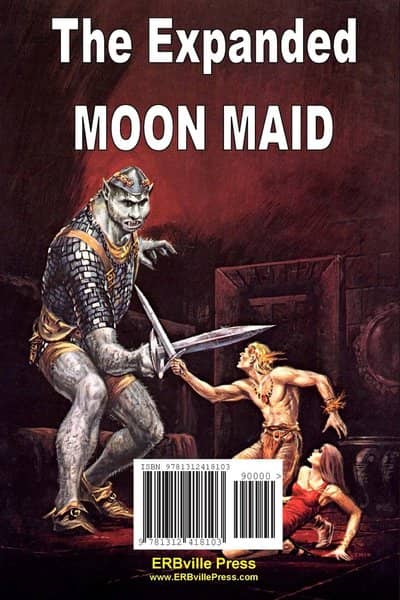 |
Your summary of the novel’s plot mentions the Warlord of Barsoom? Does John Carter from Burroughs’ Mars series make an actual appearance in the book?
Indeed he does. What’s interesting is that Edgar Rice Burroughs was one of the first authors to create a coherent universe of fictional characters that crossed over from his many series and novels. A few other authors had attempted such before him — notably H. Rider Haggard, who had his two famous characters, Ayesha and Allan Quatermain, meet, as well as crossing over several other characters — but until ERB, no author of popular literature had created such an intricate mega-crossover. So Tarzan of the Apes, John Carter of Mars, David Innes of Pellucidar, and Carson Napier of Venus, to name just a few of ERB’s better-known characters, all exist in the same Burroughsian continuity. And in The Moon Maid, we find out that John Carter exists in the same continuity as the Moon series. In fact, the space ship that takes Julian 5th to the Moon in that novel is trying to get to the planet Barsoom, and is even called The Barsoom. So it was only natural for the plot of Swords Against the Moon Men to be connected to ERB’s Mars series, because Burroughs had already joined the two series from the start. So if you want to find out what John Carter is up to in the year 2076, this is the book for you!
As you mentioned, a unique thing about the Moon series is the use of reincarnation. When I first read The Moon Maid, seeing the incarnations of the Julian clan I was reminded of the country music novelty song “I’m My Own Grandpa.” I always found it interesting that Julian 3rd, who appears both in Burroughs’ The Moon Maid and in Swords Against the Moon Men, can “remember” future incarnations. How is that possible?
A common theme of the illusory nature of time runs through several of Burroughs’ works, most notably in the Pellucidar series, where the eternal noonday sun of the hollow earth obliterates any meaningful perception of the passage of time. Timelessness is also intrinsic to the character of Tarzan, who tends to lose all sense of time when he peels off the thin veneer of civilization and takes to the wilds. The same theme of the nonexistence of time appears in ERB’s lunar trilogy, which is set, in part, within Va-nah, the hollow interior of the Earth’s moon. Unlike in Pellucidar, there is no internal sun in Va-nah, but rather a diffuse light from the clouds and the geology that illuminates it. But the lack of a sun imparts a feeling of timelessness to the inhabitants of Va-nah, just like for the residents of Pellucidar. This allows ERB’s hero to wax philosophically that time is merely an illusion. So if time does not exist, and yet reincarnation does, it’s a short jump to the notion that one could conceivably “remember” events of the so-called future.
How much research was involved in writing Swords Against the Moon Men?
Of course, I spent a lot of that nonexistent time rereading ERB’s original lunar trilogy and reimmersing myself in the world of Va-nah and the future of Earth under the dominion of the Kalkars. Beyond that, I also watched a lot of YouTube videos on modern jousting to write the scene where Julian 7th jousts with his nemesis Or-tis. I admit I made one faux pas here, but it was a mistake that ultimately wasn’t a mistake. When artist Mark Wheatley was illustrating the jousting scene, he asked me whether the characters should be shown holding shields. I went back and reread that scene in the manuscript, and soon discovered that I hadn’t mentioned that they had used shields, which they probably should have. I considered revising the scene, but Mark and I had a fun conversation in which we decided that Julian — a member of the oppressed human population who was forced to train his Kalkar overlords in jousting and other equestrian arts — probably intentionally did not want to give the not-so-bright Kalkars the advantage of training with shields, in the event that they would use this knowledge to suppress any future rebellion by the native earthlings. We had a good laugh over that, and I left the scene as originally written, without shields. After all, who was I to question Julian’s tactics against the Kalkars? Because, you know, the events of the novel are actually true and I just channeled them out of the ether…
What was the most challenging thing about writing this story?
Figuring out how Julian 7th — and his future and past incarnations — would lose his memory of the story’s events, and working through all the ramifications of that. In essence, this installment in ERB’s lunar series belongs to the subgenre of secret history. Except it is a secret history of established fictional events, rather than of real-life events, as is typical of that subgenre. But the principle is the same: find a way to squeeze a plausible story in between established events. While that’s a challenge, it’s one I revel in. The next novel I hope to write — an original historical tale set in the late nineteenth century — is also a secret history.
Julian speaks highly of his grandmother in the first chapter and is obviously affected by her disappearance. The veteran fan will recognize his grandmother as Nah-ee-lah from Burroughs’ The Moon Maid, yet this is not confirmed until midway through the book. Was this intended to keep the reader guessing?
I pay a lot of attention to character viewpoint when I write a story, and my feeling was that it wouldn’t be natural or believable for Julian 7th to ham-handedly call out that his mother was the eponymous Moon Maid. It’s more effective in terms of story and mood to show Julian’s trauma over his mother’s fate, to keep it in the viewpoint of how he would have thought of his mother when he was a young child and lost her, and only later to state her identity outright. But as you say, anyone familiar with The Moon Maid will recognize her straightaway.
Julian 7th is an accomplished horse trainer. Where did you get the idea of a concealed “single trick” that he taught his horses?
Burroughs himself was an experienced equestrian, and he had already established that Julian came from a long line of horsemen and that Julian’s father broke horses for the Kalkars. Repressed members of any society rebel in whatever small ways they can, so I figured that Julian and his uncle would use their family expertise against the Kalkars. ERB’s characters are also often tricksters by nature. What reader of the Tarzan tales doesn’t recall the many practical jokes the ape-man was so fond of inflicting on his enemies? So I surmised that Julian and his uncle would get a kick out of engaging in such deviltry as well.
A trademark of ERB’s world building was exotic creatures. However, Burroughs states in The Moon Maid that most animal life in Va-nah has become extinct, noting the existence of only the sentient quadrupeds known as the Va-gas, a four-legged snake called a rymph, a flying toad-like creature, and a catlike lizard called a tor-ho. And yet in Swords Against the Moon Men, we see a number of new lunar creatures, such as the crablike mo-lah-kars and the eerie mur-laks.
In The Moon Maid, we see only a small area of Va-nah near the city of Laythe. But Burroughs makes it clear that there are other remote cities of the U-ga, the human inhabitants of Va-nah, and these are unknown to Laythe. In Swords Against the Moon Men, the reader is introduced to new, far-flung regions of Va-nah where other forms of lunar life exist in different ecosystems. So the new creatures, in fact, aren’t a discrepancy at all, and I think ERB fans would have been disappointed not to encounter strange new monsters in the novel — I know I would have!
In addition to creating new lunar creatures, did you contribute any other innovations to ERB’s Va-nah in the new novel?
I’d noticed that ERB never explained how the Kalkars could have withstood the much higher gravity when they invaded and occupied Earth. They would have been crushed instantly unless they had some means of overcoming Earth’s gravity. So in the novel I explain that Orthis, the villainous genius from The Moon Maid, had created a gravity-processing device that could readjust the mass of creatures traveling between the Moon and Earth.
I also noticed that, curiously, ERB said the Va-gas, the sentient quadrupeds of Va-nah, could leap forty feet into the air when in the Moon’s interior. Why could the Va-gas leap so high while the rest of the creatures inhabiting Va-nah could not? ERB never explained or even questioned it. In the new novel, I make it an open question: Did the Va-gas originate on a planet with higher gravity? Were they originally from Earth? It’s an intriguing mystery. Maybe I’ll solve it someday if I ever write a sequel.
It’s interesting that “radio bombs” are mentioned but not described in The Moon Maid, and yet they appear with a little more detail in Swords Against the Moon Men. Could you elaborate on that?
The lack of description stood out to me in The Moon Maid as well, so I thought they should get a better treatment in the new novel. In my first draft, I actually described them more as radio-controlled drones with propellers, but when I got a preview of their fantastic portrayal by Chris Peuler on the cover art, I decided to revise the scene and leave their exact appearance up to the reader’s imagination.
How did you discover ERB?
I probably first heard about ERB from my uncle, who used to read the Barsoom novels out loud to my brother, my sister, and me when we were kids. Swords Against the Moon Men opens on my uncle’s birthday, as a sort of tribute to him for introducing me to ERB’s works.
I’m pretty sure I already knew who ERB was when my father took me to see At the Earth’s Core in the theater when I was eight years old. Shortly after seeing the movie, I spied the Ace Books movie edition of At the Earth’s Core on a spinner rack at the local A&P grocery store and begged my parents to buy it for me, which they did. I think I read about three chapters before getting distracted and moving on to whatever it is eight-year-olds do. But at age twelve on a clear March day, I picked up a copy of A Princess of Mars that I had bought a few months before and I couldn’t put it down. It was all over after that.
For the next two years I combed all the local bookstores looking for ERB’s many novels, and acquired others from mail order. At one point I wrote to Edgar Rice Burroughs, Inc., inquiring where I could find certain rare titles. I was elated to receive a letter signed by Danton Burroughs himself, telling me where I could order some then-hard-to-find books, such as The War Chief and Apache Devil. That meant the world to me, to get a letter from ERB’s very own grandson. Within about two years, I’d read just about every ERB book that had been published, with the exception of a few works such as The Girl from Hollywood, the two Tarzan Twins juvenile tales, and “The Resurrection of Jimber-Jaw,” all of which I picked up a few years later. Over the years I’ve continued to reread Burroughs’ works. So, in some fashion or other, ERB has been with me for just about my entire life.
You have also written a number of books set in Philip José Farmer’s Khokarsa series, including one you coauthored with him. How do your PJF writings connect to ERB?
Philip José Farmer’s Khokarsa series is also known as the Ancient Opar series, although that’s something of a misnomer, since not all of the books are set in Opar, which of course is a legendary lost city from ERB’s Tarzan novels. In the early 1970s, Phil received permission from Hulbert Burroughs to write a series of novels set in the motherland civilization of Opar, which was but one city among many in a larger Central African ice age empire. Phil wrote two novels in the series — Hadon of Ancient Opar (1974) and Flight to Opar (1976) — and began a third before other projects pulled him away.
In 2005, the outline and partial manuscript of the third book in the series was discovered by Michael Croteau, Phil’s webmaster and the publisher of Farmerphile: The Magazine of Philip José Farmer, which I was coediting at the time. Mike showed me the material and I knew the book had to be completed. The story was just too compelling to languish untold. Phil was retired from writing at that time, so I wrote him a proposal of how I would complete the novel, and — much to my surprise — he granted me permission to write the book, which was published under the title The Song of Kwasin in the omnibus Gods of Opar: Tales of Lost Khokarsa in 2012. The Song of Kwasin was later reprinted under its own covers and even translated into French, and I’ve written three other books in the series: Exiles of Kho, Hadon, King of Opar, and Blood of Ancient Opar.
Will there be more Ancient Opar stories?
I do plan to write more Khokarsa stories set in a different locale than Opar. This will be a series that I’m calling the Foundation of Kôr trilogy, which will be as inspired by the works of H. Rider Haggard as the original Khokarsa novels that Farmer wrote were inspired by the works of Edgar Rice Burroughs.
Once I complete that trilogy, I might write more tales set in Ancient Opar, but it all depends on whether I can set aside the time from other projects I have planned, and whether I have the permission when the time comes. I’d like to write one more story about Hadon’s daughter, La of Opar (this is Farmer’s La, who is an ancient ancestor of Burroughs’ character who is also named La), which would take place after the events of Blood of Ancient Opar. And if I really found myself with a lot of spare time on my hands, I would want to write two more books that would follow Exiles of Kho, featuring the priestess-heroine Lupoeth, Opar’s founder.
Your day job is senior editor at Paizo, the publisher of the Pathfinder Roleplaying Game which, in conjunction with Dynamite Entertainment, also produces the Pathfinder Worldscape comics. You have scripted some of the latter, which are ERB related. Tell us about them.
Pathfinder Worldscape is the brainchild of Paizo’s publisher, Erik Mona, who scripted the original six-issue run of Worldscape comics. The Worldscape is essentially demiplane that draws to it heroes and villains from throughout the history of Earth, ERB’s Barsoom, and the Pathfinder RPG’s home planet of Golarion, allowing for epic, often pulp-themed crossovers.
As Paizo’s resident ERB aficionado, I was called in by Erik to consult on the Barsoom and Tarzan elements in his original series. So when the opportunity arose for someone to write a one-shot Pathfinder Worldscape: Lord of the Jungle comic for a then-upcoming Humble Bundle campaign, Erik invited me to script it. How many times do the stars align in such a way? I couldn’t say no.
My first comic, “Forest of Nightmares,” tells the story of how Tarzan and — rather fittingly, given my bibliography — La of Opar end up on the Worldscape. For those who weren’t able to participate in the Humble Bundle, “Forest of Nightmares” is now available in the hardcover Pathfinder Worldscape, Volume Two omnibus and a standalone electronic edition. I recently scripted a second one-shot about Dejah Thoris and Tars Tarkas (both, of course, from ERB’s Barsoom tales) on the Worldscape, which was also written as a bonus comic for a Humble Bundle. It releases in 2018.
What is the premise of your Fly-Leaves series?
The Fly-Leaves series is to be a cycle of interlinked short stories featuring a guild of nineteenth-century Baconian investigators looking into the supernatural mysteries surrounding the life of the philosopher and statesman Francis Bacon. A Baconian, for those who don’t know, is someone who believes Francis Bacon was the true author of the plays commonly attributed to William Shakespeare. I’ve had published only one tale in the series so far — “With Dust Their Glittering Towers” — with more to follow in the coming year. Stay tuned.
Your Pluritopia series involves a “mysterious woman from Earth’s center.” Would that be Pellucidar? Is the series considered steampunk, and if not, how are the fish-shaped airships powered.
No, it’s not Pellucidar — but rather the inner world of Mizora, from the nineteenth-century novel Mizora: A World of Women by Mary E. Bradley Lane. Pluritopia is a world of literary utopias from the nineteenth and early twentieth centuries, with a few dystopias thrown in for spice. The series isn’t steampunk so much as, well, utopiapunk, and the fish-shaped airships — inspired by the artwork of Albert Robida — are powered not by steam, but rather orgone energy.
Are there more Pluritopia tales in the works?
Originally, I’d envisioned writing a novel set in the world of Pluritopia, but whether I can fit it into my schedule remains to be seen. I’d like to, if I can.
It’s clear from your body of work that you are enamored with the works of Burroughs and Farmer. What other novelists do you admire?
David Herter is probably my favorite living novelist. Evening’s Empire — about a composer writing an opera of Verne’s Twenty-Thousand Leagues Under the Sea as he attempts to deal with the tragic death of his wife and gets pulled into an eerie and magical world — was the first novel of his that I read, and it’s still my favorite, though I’ve enjoyed everything Herter has had published. My tastes tend to run to nineteenth-century and early twentieth-century literature — H. Rider Haggard, Jules Verne, H. G. Wells, Hermann Hesse — though I love the work of Frank Herbert, Kurt Vonnegut, and Philip K. Dick. I read some moderns, but I read a lot for research and that doesn’t give me a lot of time for pleasure reading. I like to trace literary traditions so that, hopefully, they come to bloom in my own writings. So that often pushes the subject matter of my reading back into the past.
What did you learn about writing from your association with Philip José Farmer?
Farmer did what few authors have managed, which is to successfully bridge the past with the present, and often the future, in that much of what he wrote was iconoclastic and groundbreaking. And though he was extremely studied in literature, he also didn’t shy away from what he called pop lit; he bridged those together, too. I like to think that I’ve absorbed some of that.
In terms of writing craft, Farmer understood the mythic structure of a story. He forsook a career as a more “serious” author because he understood that a good story is a good story, that a fantastical adventure story could carry mythic weight as well as, or maybe sometimes better than, a piece of mundane, “literary” fiction. So I try to work the driving thrum of mythic structure into my stories, just as I saw him doing with his own.
He also had the best opening lines. “Kickaha was a quicksilver Proteus.” “Loga cracked like an egg.” “I was conceived and born in 1888. Jack the Ripper was my father.” “The bolg kills all but one!” Who the heck doesn’t want to read on to find out what a bolg is? Whenever I write a Farmerian story in particular, I try to do justice to those wondrous opening lines of Phil’s.
Are there more ERB-related books in your future?
I hope so! Other than my aforementioned desire to write more Khokarsa tales, it would be hard to turn down an opportunity to write a John Carter of Mars novel or, say, a Tarzan novel set in Opar.
What advice would you give to aspiring writers?
Forge your own path and be true to what you’re interested in. You don’t have to get there like other people have — no one could possibly follow the unique path to publication that I’ve taken. But you do have to do the work. You will encounter shortcuts, but they are few and far between, and you can’t rely on them. Do the work and, whenever you possibly can, have some fun doing it.
Christopher Paul Carey is the author of Swords Against the Moon Men, an authorized sequel to Edgar Rice Burroughs’ classic science fantasy novel The Moon Maid. He is the coauthor with Philip José Farmer of The Song of Kwasin, and the author of Exiles of Kho, Hadon, King of Opar, and Blood of Ancient Opar, all works set in Farmer’s Khokarsa series. His short fiction may be found in various anthologies. He is a senior editor at Paizo, working on both the award-winning Pathfinder Roleplaying Game and Starfinder, and he has edited numerous collections, anthologies, and novels. He holds a master’s degree in Writing Popular Fiction from Seton Hill University, and he lives in Western Washington. Visit him online at www.cpcarey.com.
Jess Terrell is an admin in the Facebook discussion group “For the Love of All Things Edgar Rice Burroughs.” That group, founded January 2016 by Lilla Pop, is an up-and-coming venue for news, discussion, and research into the worlds, characters, stories, and life of Edgar Rice Burroughs.
In addition, over the last year Jess has acted as a consultant to the Edgar Rice Burroughs Memorial Collection at the University of Louisville and recently developed a 30-minute presentation for U of L addressing “Why Edgar Rice Burroughs Is Important.” Jess is a regular contributor to ERB-APA as well as The Muckers Magazine produced by the Chicago Muckers chapter of The Burroughs Bibliophiles. Jess has written a few ERB pastiches, including his most recent effort, a Thanksgiving tribute entitled “The Eternal Pilgrim.”
After a 42 year career in I.T., Jess retired in early 2017 to spend as much time as possible in promoting and researching the works of Edgar Rice Burroughs. Jess holds a B.S.B.A. in Business Management, a B.S.B.A. in Computer Science and an M.B.A. focusing in Leadership and Team Theory all of which earned from Sullivan University based in Louisville, KY.
His earliest memories are of watching Tarzan movies as TV reruns, but after discovering the Ballantine paperback featuring Ron Ely on the cover in fall 1966, he realized the ape-man was intelligent, articulate, multilingual, and a world traveler as well as a problem-solver.
Jess has two children, now grown. In his spare time he enjoys reading and watching science fiction, notably Star Trek, Star Wars, and of course ERB. Jess is an avid N.F.L. fan favoring the Indianapolis Colts, and is an enthusiast of blues-based and Americana genres of music.
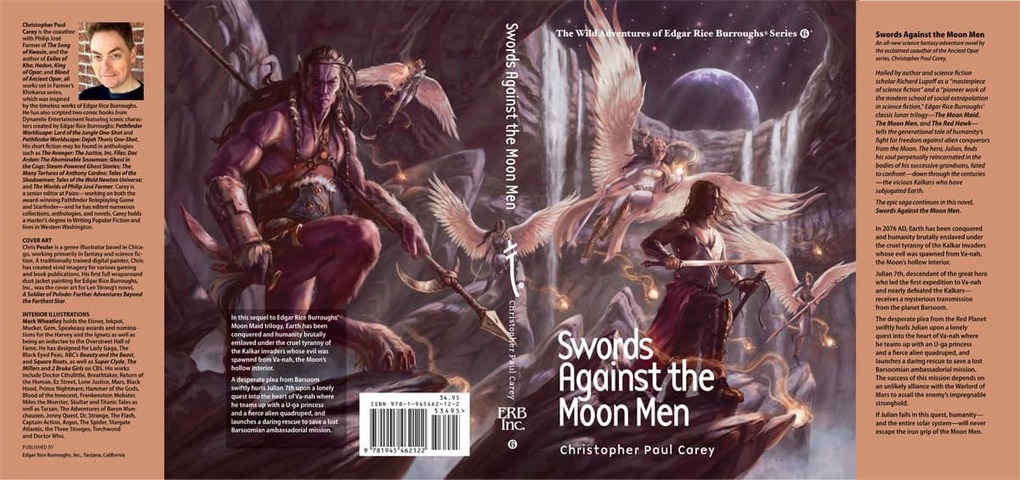
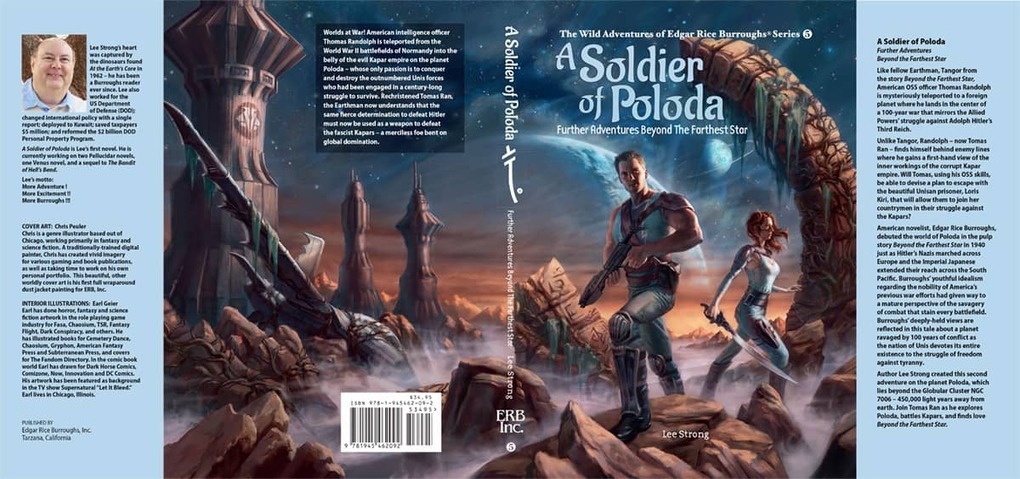
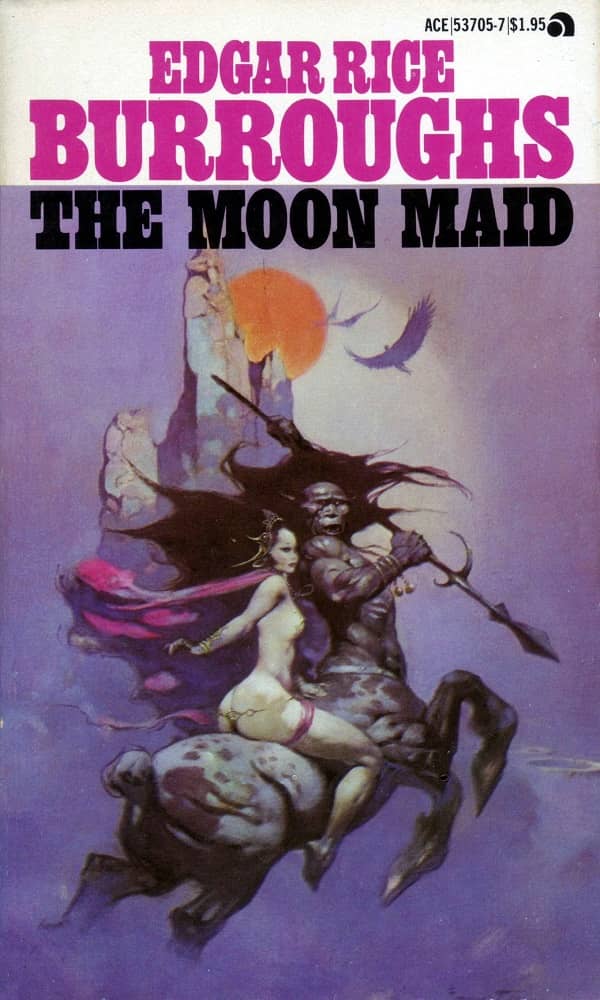
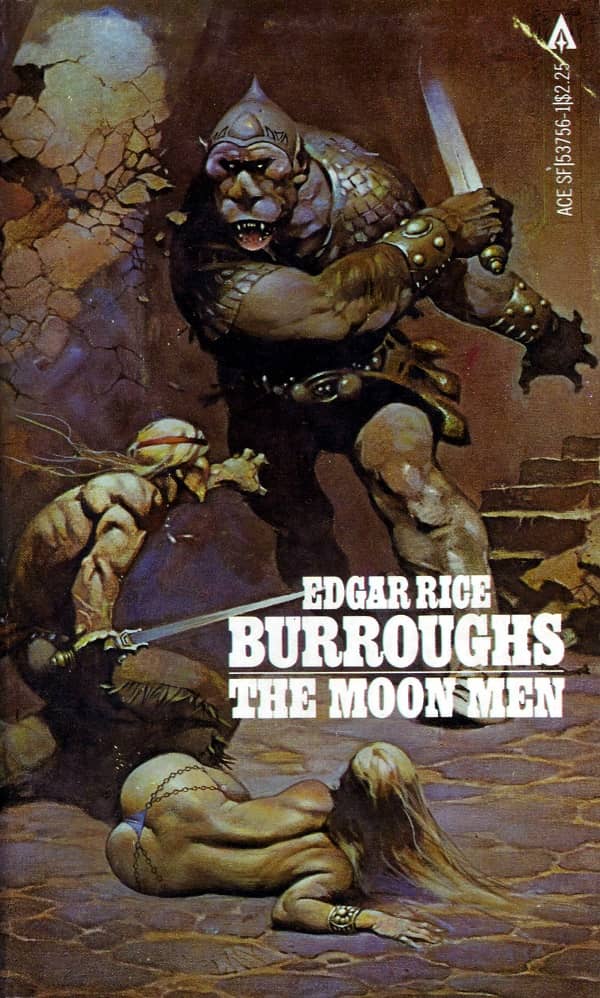
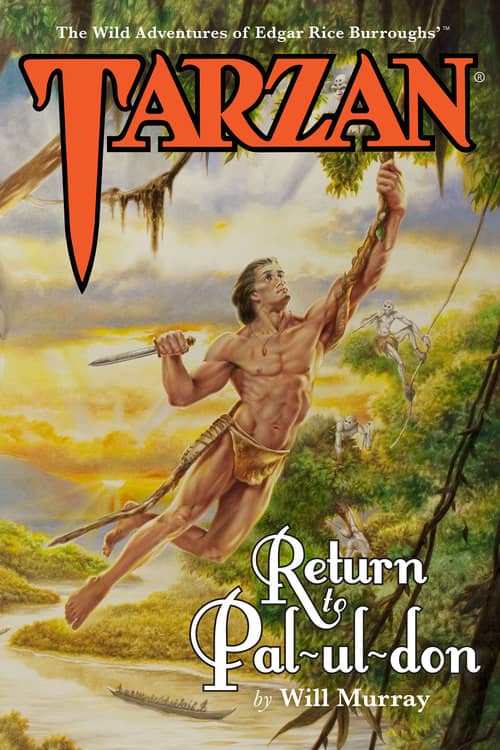
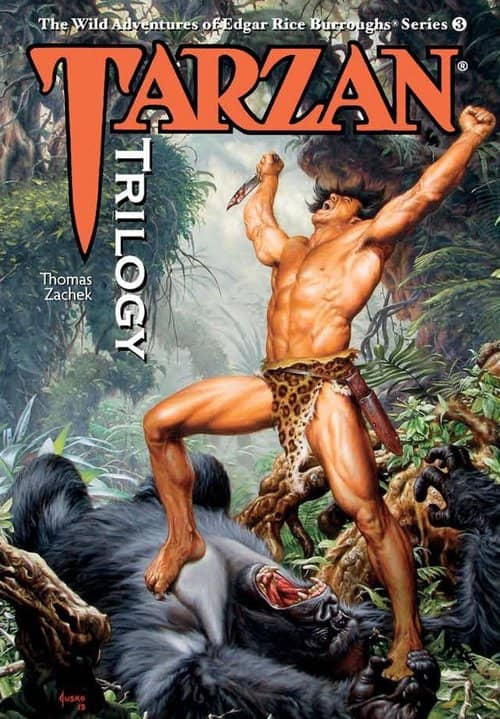
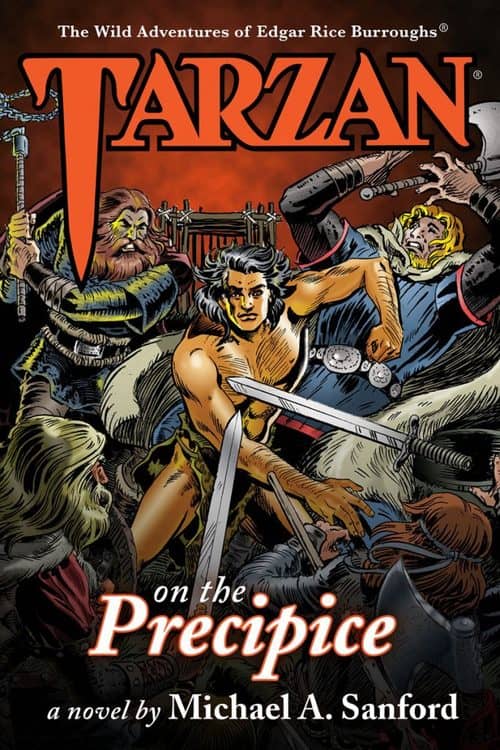
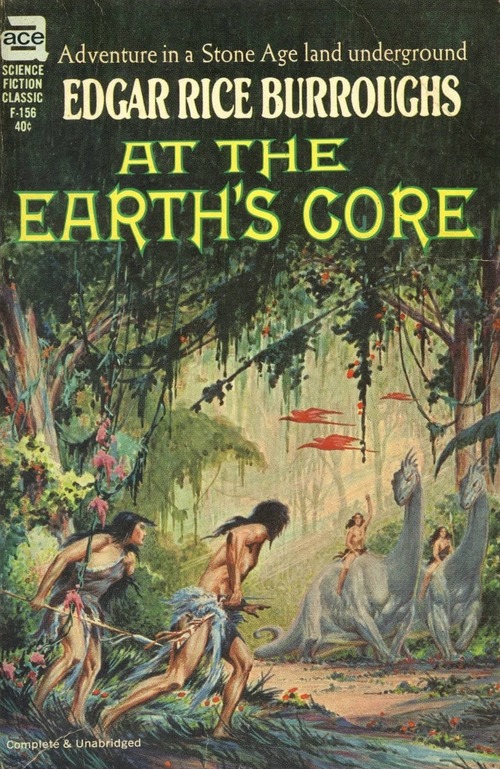
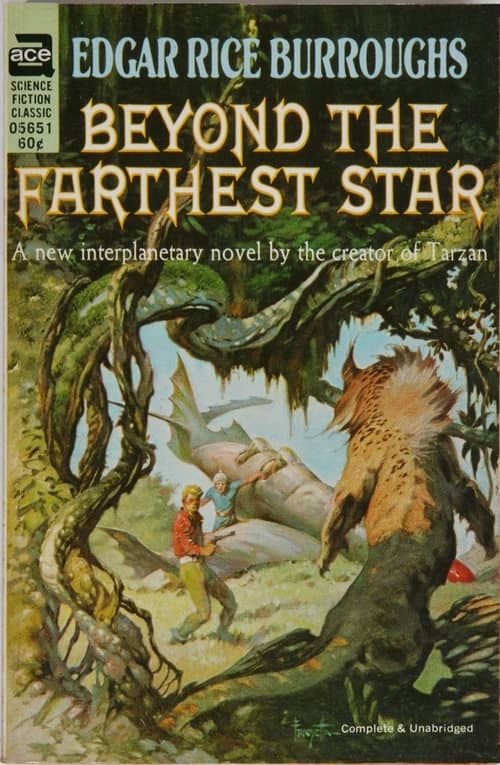
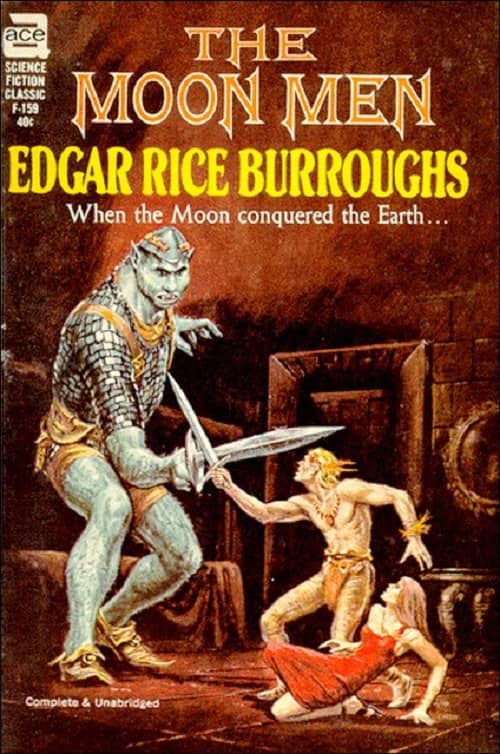
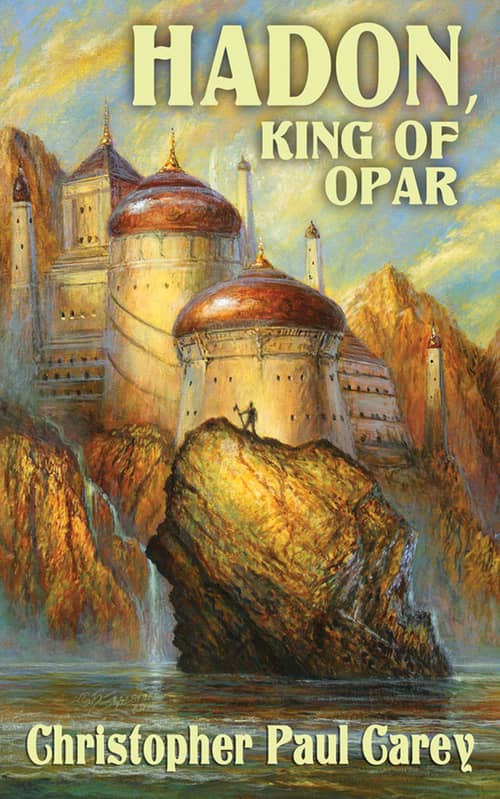
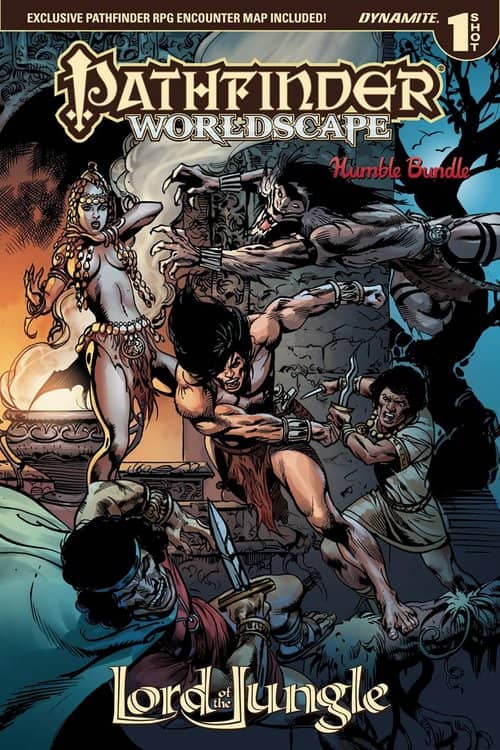
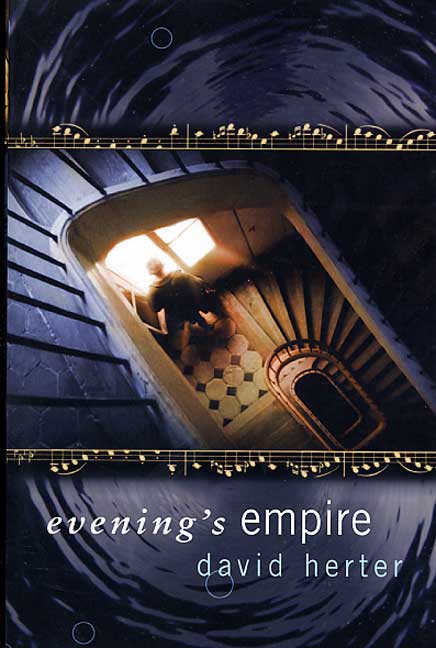
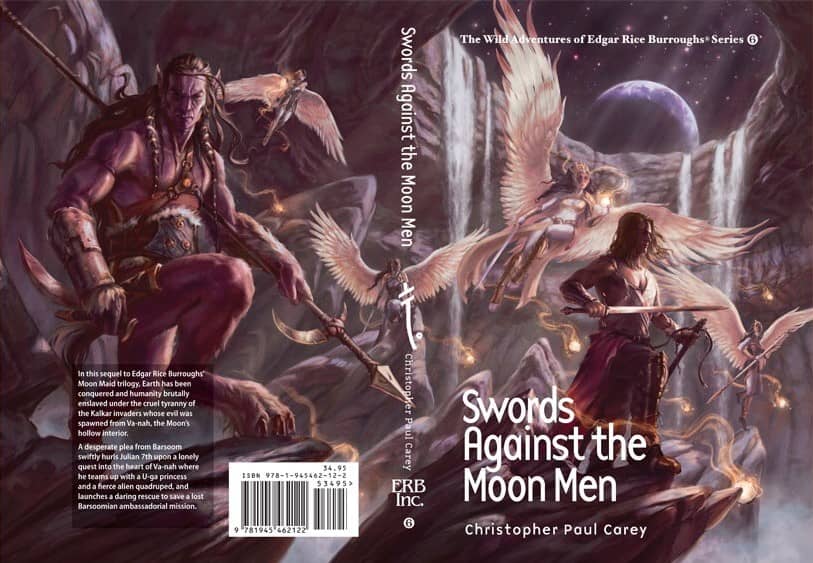
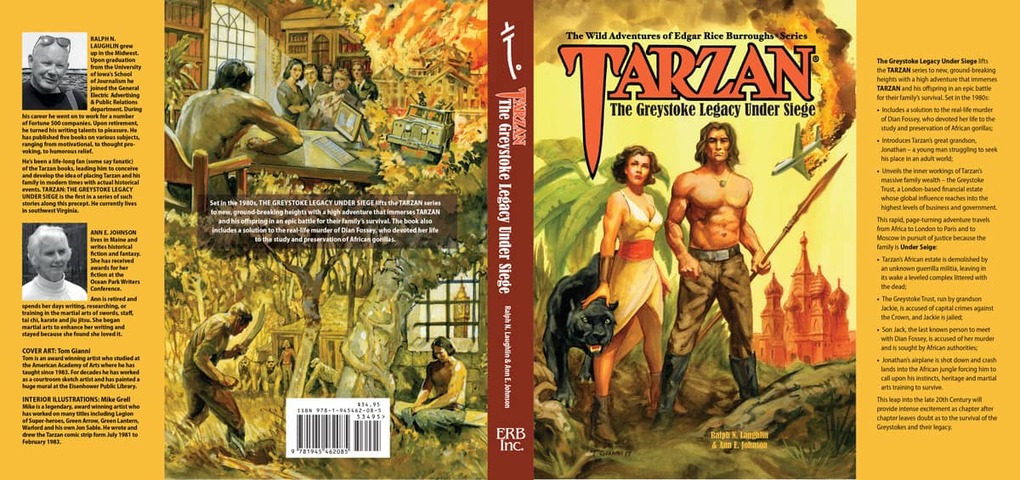
Major props to Jess and CPC for such an informative and fun interview. Getting a look behind it all makes it easy to see why Carey was such a great fit for the Khokarsa novels. Being a long-time fan of the “Moon” books, it sounds like I might enjoy SWORDS AGAINST THE MOON MEN even more than the Opar stuff. I definitely look foward to the Kor Trilogy. We’re way overdue for a Haggard renaissance.
I guess my only gripe would be that SOMEBODY needs to write a novel about Earth during the barbaric times before THE RED HAWK. That, or a sequel to THE RED HAWK.